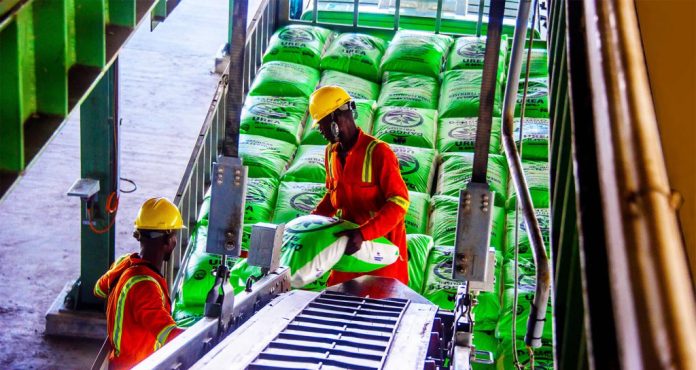Aliko Dangote recently led a ground-breaking ceremony for a transformative industrial project in Gode, Ethiopia: a $2.5 billion fertiliser complex that could produce up to three million tonnes of urea annually. The venture, a joint effort between the Dangote Group and Ethiopian Investment Holdings, is among the world’s largest fertiliser undertakings. It leverages Ethiopia’s growing gas reserves in the Hilal and Calub fields, and signals a bold reorientation toward agro-industrialisation, regional food security, and economic sovereignty.
Ethiopia has attracted sustained attention this year. It hosted the Second Africa Climate Summit (ACS2) in September, positioning itself as a continental forum for climate ambition and African leadership in sustainability. Around the same time, Ethiopia officially inaugurated the Grand Ethiopian Renaissance Dam (GERD), Africa’s largest hydroelectric facility, with a capacity of 5,150 MW, underscoring its commitment to green power and infrastructure-led transformation. Ethiopia also launched duty-free exports under the African Continental Free Trade Area (AfCFTA) on 9 October, opening agricultural and industrial goods to markets across the continent. In this crucible of ambition, Dangote’s fertiliser project is both emblematic and strategic.
The Gode plant is more than a factory; it is a structural pivot in Ethiopia’s agricultural and industrial fabric. A capacity of three million tonnes of urea annually would make the complex one of the largest in Africa. By most estimates, Ethiopia currently relies heavily on imported fertilisers, often paying premium costs that strain budgets and limit access. Having local supply changes the calculus: farmers across the Horn and East Africa could access fertilisers more cheaply, and at scale, improving yields in staple crops like maize, teff, wheat and pulses over large swathes of the country.
The location in Ethiopia’s southeastern region is purposeful. Proximity to the Hilal and Calub gasfields suggests a model where feedstock supply, processing, logistics, and agricultural zones can operate in integrated fashion. The Dangote-Ethiopian Investment Holdings partnership also envisions future expansions into ammonium nitrate, NPK blends, and other compound fertilisers. Such diversification could turn Ethiopia into a fertiliser hub for neighboring countries.
This aligns with Ethiopia’s industrial narrative. The government and Dangote leaders alike emphasized economic liberalisation, infrastructure investment, and industrial anchor projects. Dangote praised reforms that opened critical sectors to private capital, and highlighted the backing of lenders like Afreximbank, the Africa Finance Corporation, and leading Nigerian banks. He framed the project as one where “Africans can develop Africa,” leveraging local knowledge and scale to reduce dependence on imports.
Gode’s industrial thrust dovetails with Ethiopia’s broader 2025 agenda. At ACS2, Ethiopia declared its ambition to lead Africa’s climate and sustainable development discourse. The inauguration of GERD underlined that ambition in electric power, with the dam now capable of generating over 5,000 MW and offering export potential to neighbors. Meanwhile, integrating fertilizer manufacturing into a climate framing puts Ethiopia in rare position: it is not expanding fossil fuel production, but instead engineering an industrial enabler aligned with its agricultural and food security agenda.
Still, the project faces practical challenges. The supply chain, from gas to pipeline to plant to fertilizer offtake, must be reliable and efficient. For farmers to benefit, distribution networks must reach remote areas, not just major agricultural zones. The plant’s scale demands sustained feedstock availability; gas production in Hilal/Calub must scale to match the plant’s needs, or else import or alternate supplies will erode margins. Moreover, fertilizer plants generate emissions, necessitate handling of chemical byproducts, and demand environmental safeguards around effluent, storage, and transport.
Political risk, too, cannot be discounted. Ethiopia has experienced internal conflict, currency volatility, and infrastructure bottlenecks. A project of this size must contend with local community relations, land rights, water usage, and regulatory consistency. If the plant underdelivers or faces delay, the reputational and economic cost could be steep.
For Ethiopia’s economy, though, the upside is profound. Suppose the plant comes online by, say, 2028, at full capacity. Ethiopian farmers would have access to domestic urea at lower cost; import bills for fertiliser, currently running into hundreds of millions of dollars annually, would shrink. Agricultural productivity could improve, rural incomes could rise, and food import dependence could decline. Surplus produce could be exported more competitively across AfCFTA links. Jobs would be created, not only in the plant but in associated logistics, transport, maintenance, and agribusiness sectors.
The fertiliser project also reinforces Ethiopia’s industrial positioning. It signals to foreign and regional investors that Addis Ababa is serious about high-capital, value-added manufacturing beyond the traditional extractives or light manufacturing sectors. Coupled with GERD’s power supply and AfCFTA’s trade openings, the Gode plant fits into a larger ecosystem: energy, industrial capacity, trade connectivity, agricultural development, and climate legitimacy.
At a regional level, East African neighbors; Kenya, Uganda, Somalia, South Sudan, could become buyers or partners in distribution. Ethiopia could offer fertilizer at more competitive terms, becoming a regional agro-input hub. That potential strengthens its diplomatic and economic influence.
Dangote’s claim that in five years Ethiopia could become Africa’s leading agricultural nation is bold. But viewed through the prism of 2025, where Ethiopia is hosting ACS2, launching AfCFTA exports, inaugurating GERD, and now anchoring fertilizer industrialization, the ambition begins to read less as fantasy and more as strategy.
This fertilizer plant is not a standalone headline. It is a node in a narrative Ethiopia is writing: that of a nation moving from aid dependency and agricultural subsistence toward industrial agriculture, energy sovereignty, and pan-African trade integration. If delivered well, Gode might not only fertilize Ethiopia’s farms, it could fertilize its development trajectory.






